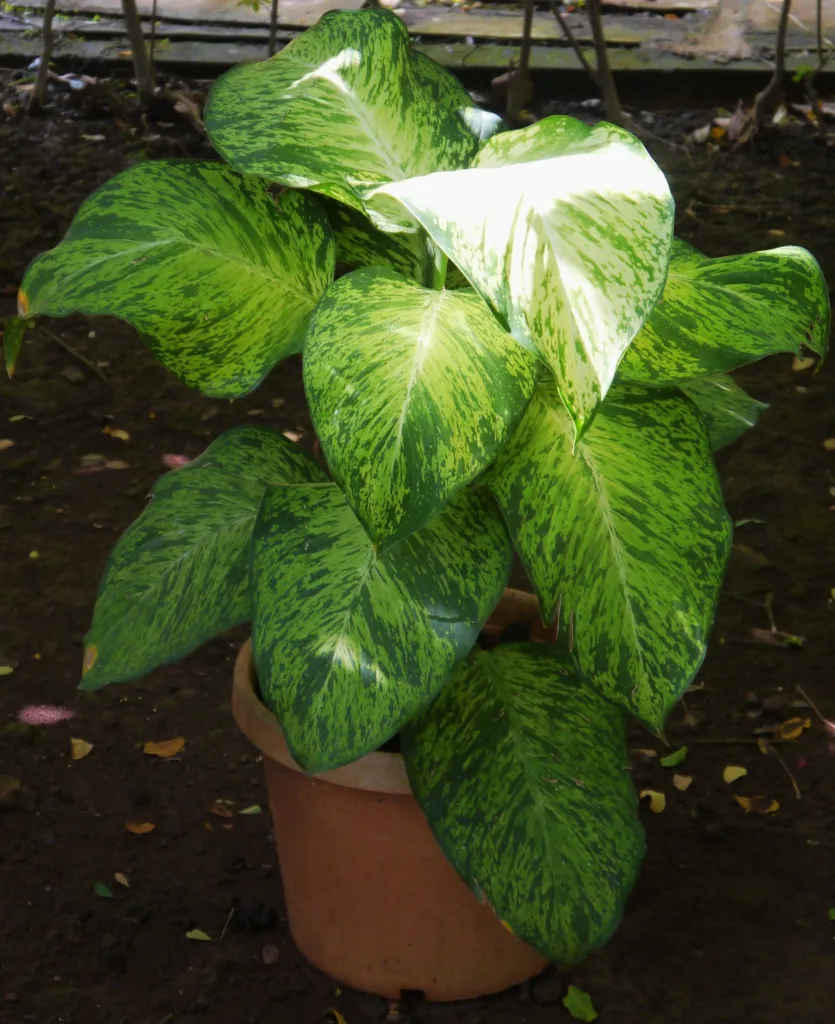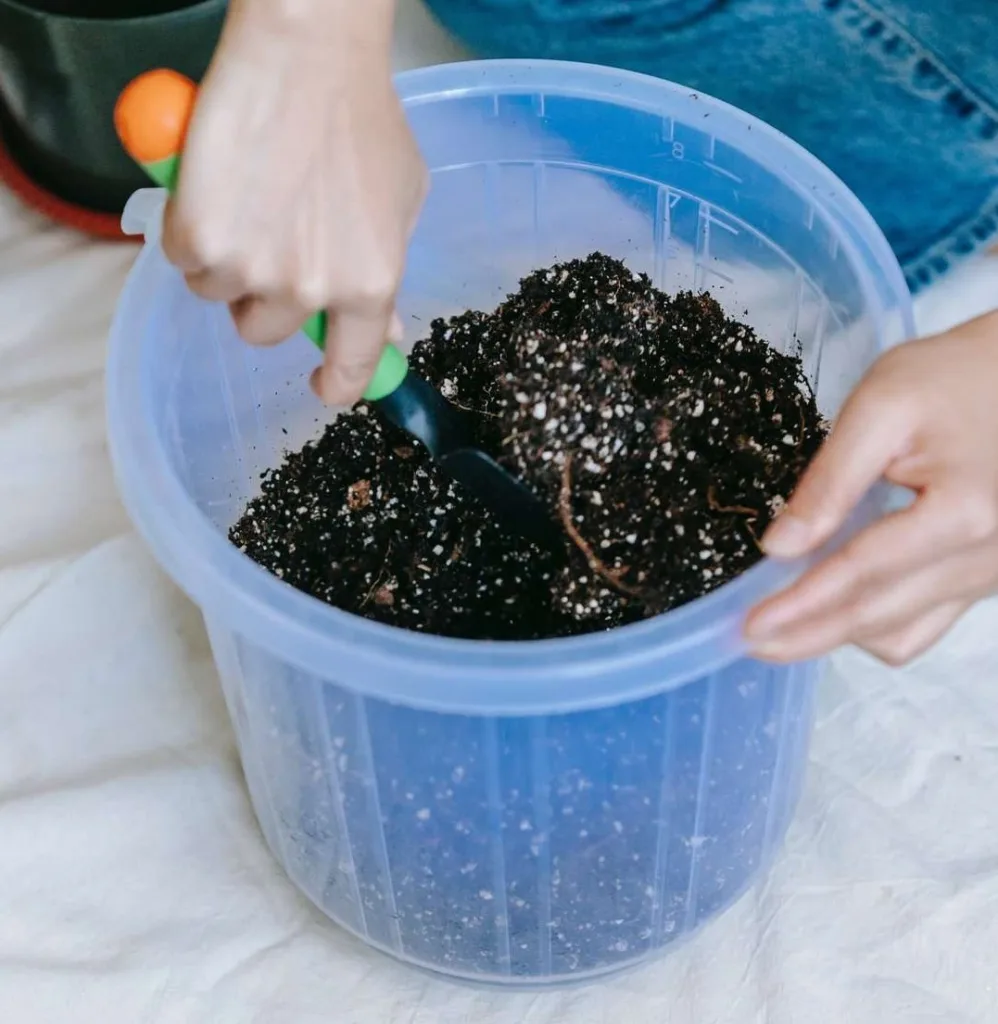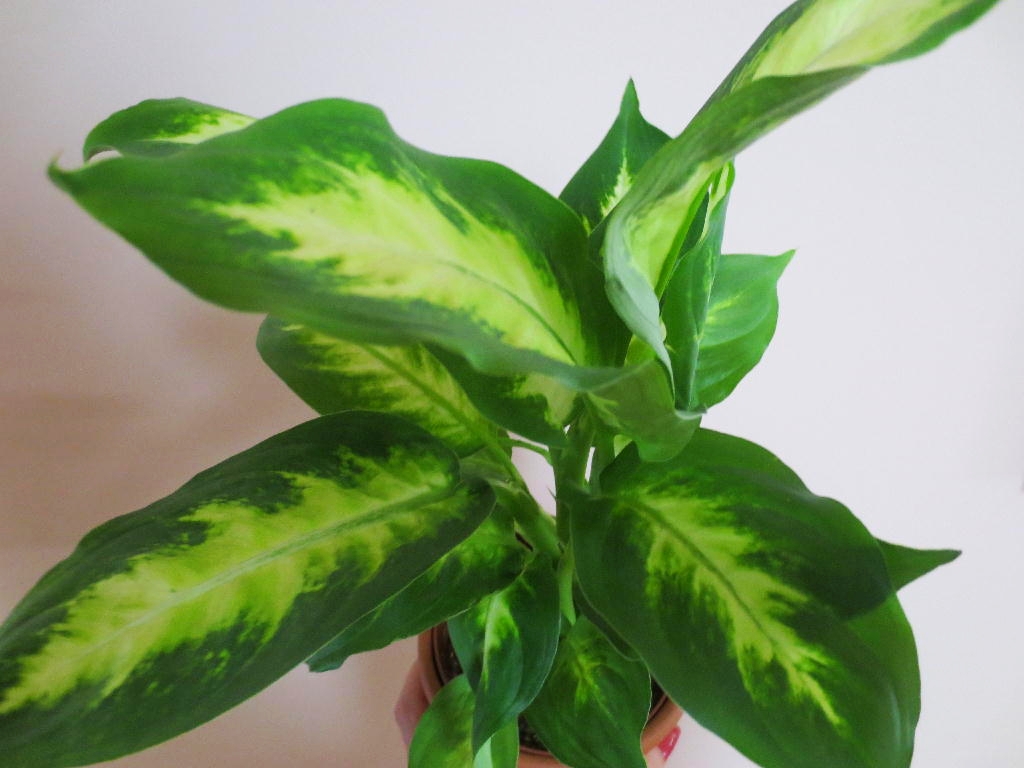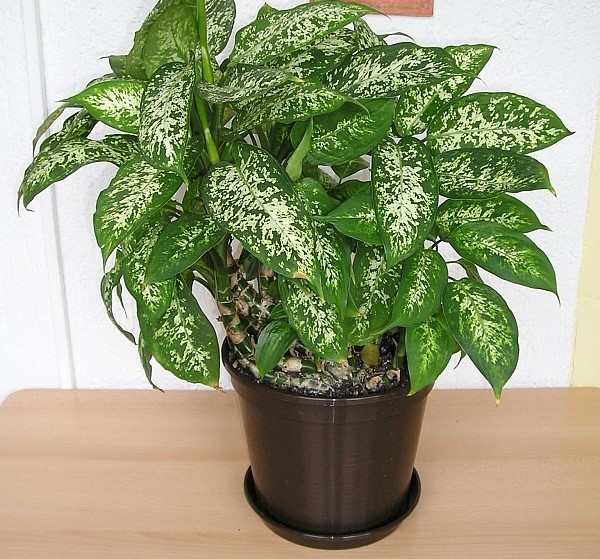Are you a plant lover looking to add some greenery to your home? Or maybe you’re already familiar with plant care and are interested in expanding your collection.
Whichever category you fall into, you’re in for a treat with Dieffenbachia. This tropical plant is not only aesthetically pleasing but also relatively easy to care for, making it a popular choice among indoor gardeners.
In this comprehensive guide, we’ll explore everything you need to know about planting, growing, and caring for Dieffenbachia.
From understanding its basic needs to troubleshooting common issues, we’ll equip you with the knowledge to ensure your Dieffenbachia blooms and flourishes.
What is Dieffenbachia
Dieffenbachia, commonly known as Dumb Cane, is a popular and attractive tropical houseplant known for its lush leaves.
Dieffenbachia is a genus of tropical plants native to the New World Tropics, primarily found in regions of Central and South America.
The common name “Dumb Cane” is derived from the toxic sap that, when ingested, can cause temporary loss of speech.
Some Popular varieties include Dieffenbachia Seguine (Dumb Cane), Dieffenbachia maculata (Leopard Lily), and Dieffenbachia ‘Camille’ (Compact Dumb Cane).
Dieffenbachia’s lush and vibrant leaves make it a sought-after choice for indoor gardens, adding a tropical touch to homes and offices.
Regular care, proper placement, and awareness of its toxic properties contribute to a healthy and safe growing environment for this tropical houseplant.
| Botanical Name | Dieffenbachia spp. |
|---|---|
| Common Name | Dumb Cane |
| Family | Araceae |
| Plant Type | Perennial |
| Native Region | Tropical Americas |
| Mature Height | Varies by species, typically 1 to 6 feet |
| Light Requirements | Bright, indirect light; can tolerate lower light levels |
| Watering Needs | Keep soil consistently moist, but not waterlogged; allow the top inch of soil to dry before watering |
| Soil Type | Well-draining potting mix |
| Humidity | Prefers high humidity |
| Temperature Range | 65-75°F (18-24°C) |
| Toxicity | Contains calcium oxalate crystals; toxic if ingested, causing irritation and swelling |
| Special Features | Decorative foliage with variegated patterns; air-purifying qualities |
| Common Varieties | Dieffenbachia seguine, Dieffenbachia maculata, Dieffenbachia amoena |
| Propagation | Stem cuttings, air layering |
| Maintenance | Prune for shape, remove yellowing leaves; protect from drafts and cold temperatures |
| Common Issues | Browning edges or spots on leaves may indicate overwatering or low humidity; susceptibility to spider mites |
| Additional Notes | Popular as an indoor ornamental plant for its attractive foliage; requires cautious handling due to toxicity |

Choosing the Right Dieffenbachia
Before diving into the planting process, it’s essential to choose the right Dieffenbachia variety for your space.
With numerous cultivars available, each boasting unique characteristics, you’ll want to select one that aligns with your preferences and environment.
Consider the following factors while choosing a Dieffenbachia:
Size: Dieffenbachia plants can range in size from compact varieties suitable for small spaces to larger ones that can reach several feet in height. Assess the available space you have and select a size that fits your surroundings.
Color: Dieffenbachia leaves come in various colors and patterns, including green, yellow, and white. Decide on the color scheme that appeals to you or complements the overall aesthetic of your home.
Light Requirements: Different Dieffenbachia varieties have varying light requirements. Some thrive in moderate to bright indirect light, while others can tolerate low-light conditions.
Evaluate the sunlight availability in your space to choose a variety that matches your light conditions.
Toxicity: It’s important to note that Dieffenbachia is toxic to pets and humans if ingested. If you have children or pets in your home, opt for varieties that are less toxic or ensure the plant is placed out of their reach.
Once you’ve considered these factors, it’s time to move on to the planting process.
Planting Dieffenbachia
Selecting the Right Pot and Soil
A crucial aspect of successful Dieffenbachia planting is choosing the appropriate pot and soil. Here’s what you need to keep in mind:
Pot Size: Dieffenbachia prefers snug pots that aren’t excessively spacious. Choose a pot that is only slightly larger than the root ball to promote healthy root growth and prevent waterlogging.
Drainage Holes: Ensure the chosen pot has adequate drainage holes to allow excess water to escape. This helps prevent root rot and promotes optimal growth.
Well-Draining Potting Mix: Dieffenbachia thrives in well-draining soil. A mix of peat moss, perlite, and organic matter creates a suitable environment for the plant’s roots.

Planting Your Dieffenbachia
Follow these steps to plant your Dieffenbachia successfully:
Prepare the Pot: Place a layer of small stones or broken crockery at the bottom of the pot to further enhance drainage.
Add Potting Mix: Fill the pot approximately one-third to half full with the prepared well-draining potting mix.
Remove the Plant from the Nursery Pot: Gently tap the sides of the nursery pot to loosen the soil. Carefully slide the plant out, cradling the base of the stem between your fingers.
Position the Plant: Place the plant in the center of the pot, ensuring it sits at the same level it was in the nursery pot. Adjust the potting mix underneath, if necessary, to achieve the desired height.
Fill the Remaining Space: Fill the remaining space around the plant with a potting mix, gently firming it down to secure the plant in an upright position.
Water Thoroughly: After planting, give your Dieffenbachia a thorough watering, ensuring the soil is evenly moist. Excess water should flow out of the drainage holes.
Choose the Perfect Spot: Select a suitable spot for your Dieffenbachia, considering its light requirements and temperature preferences.
Now that your Dieffenbachia is planted, let’s move on to its care requirements.
Dieffenbachia Care
Light and Temperature
Dieffenbachia plants prefer moderate to bright indirect light. Placing them near a north or east-facing window is often ideal. While they can tolerate lower light conditions, it may result in slower growth and less vibrant foliage.
Maintaining a consistent temperature is also crucial for Dieffenbachia’s well-being. Ideally, temperatures between 60°F and 75°F (15°C to 24°C) suit this tropical plant best. Avoid subjecting it to cold drafts, as they can lead to leaf discoloration.
Watering and Humidity
Proper watering techniques and humidity levels are vital for Dieffenbachia’s health. Follow these guidelines:
Watering: Allow the top inch (2.5 cm) of soil to dry out between waterings. Overwatering can cause root rot while underwatering can lead to dryness and stress. Find the right balance by monitoring the soil moisture regularly.
Humidity: Dieffenbachia thrives in high-humidity environments. You can increase humidity levels by misting the leaves regularly or placing a tray of water near the plant, ensuring it doesn’t come in direct contact with the water.
Fertilizing
Dieffenbachia benefits from regular fertilization to promote growth and vibrant foliage. Use a balanced, water-soluble fertilizer, diluted to half-strength, every four to six weeks during the growing season (spring and summer). Avoid fertilizing during winter when the plant is in its dormancy phase.
Pruning and Propagation
Regular pruning helps maintain the shape and size of your Dieffenbachia. Whenever you notice overgrowth or crowding, simply trim back the excessive foliage using clean, sharp shears.
Be sure to wear gloves or wash your hands thoroughly afterward, as Dieffenbachia sap can cause skin irritation.
If you’d like to expand your Dieffenbachia collection or share it with friends, propagation is a fantastic option.
Stem cuttings can be rooted in a well-draining potting mix, and once roots develop, they can be potted individually.

Common Issues and Troubleshooting
Dieffenbachia plants are generally hardy, but they can face a few issues. Here are some common problems and their solutions:
- Yellowing Leaves: This may indicate overwatering, inadequate light, or nutrient deficiencies. Adjust your watering schedule, provide adequate light, and consider fertilizing if necessary.
- Brown Tips: Brown tips on the leaves are typically a sign of low humidity. Increase humidity levels by misting or using a humidifier.
- Pests: Common pests that can affect Dieffenbachia include spider mites and mealybugs. Address these issues promptly by using organic pest control methods or carefully wiping down the affected areas with a soapy solution.
Remember to inspect your plant regularly for any signs of distress and take appropriate action promptly.
| Caution: While Dieffenbachia is a beautiful addition to indoor spaces, it’s important to be aware of its toxicity. Keep it away from curious pets and children, and be cautious when handling the plant. |
Conclusion
Congratulations! You’re now equipped with the knowledge and skills to successfully plant, grow, and care for your Dieffenbachia.
From choosing the right variety to providing the ideal environment, you have the tools to create a blooms indoor garden.
Remember to consider your Dieffenbachia’s specific needs, such as light requirements, watering routine, and temperature preferences.
Through proper placement, soil preparation, and routine maintenance, you’ll create an environment in which your Dieffenbachia can thrive.
Now go forth and enjoy the beauty and benefits of your Dieffenbachia plant!
People Also Ask
Is Dieffenbachia good for indoors?
Yes, Dieffenbachia is a popular choice for indoor plants. It thrives in indoor conditions and can tolerate lower light levels.
Is Dieffenbachia an air purifier?
While Dieffenbachia is not specifically known as an air purifier like some other plants, it can contribute to indoor air quality by adding oxygen and enhancing the overall ambiance.
Does Dieffenbachia need full sun?
Dieffenbachia prefers bright, indirect light but can tolerate lower light conditions. It should be protected from direct sunlight, which can scorch its leaves.
Is Dieffenbachia a good luck plant?
Dieffenbachia is not traditionally considered a “good luck” plant. However, it is valued for its decorative foliage and is often chosen for homes and offices for its aesthetic appeal.

